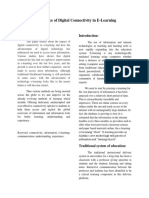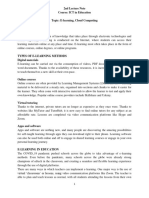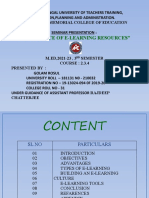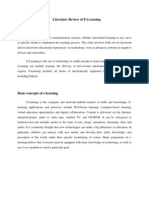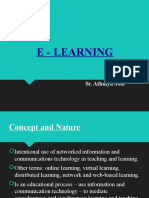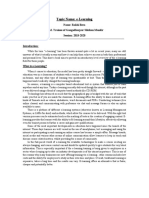0% found this document useful (0 votes)
25 views9 pagesE Learning
This document discusses the integration of Information and Communication Technology (ICT) in education, highlighting the transformative impact of e-learning on traditional learning methods. It outlines the benefits and challenges of ICT and e-learning, including enhanced access to education, personalized learning, and issues such as digital literacy gaps and lack of face-to-face interaction. The paper concludes that while ICT and e-learning have reshaped education, addressing challenges like the digital divide and cybersecurity is essential for maximizing their potential.
Uploaded by
kingsleyesisi1Copyright
© © All Rights Reserved
We take content rights seriously. If you suspect this is your content, claim it here.
Available Formats
Download as DOCX, PDF, TXT or read online on Scribd
0% found this document useful (0 votes)
25 views9 pagesE Learning
This document discusses the integration of Information and Communication Technology (ICT) in education, highlighting the transformative impact of e-learning on traditional learning methods. It outlines the benefits and challenges of ICT and e-learning, including enhanced access to education, personalized learning, and issues such as digital literacy gaps and lack of face-to-face interaction. The paper concludes that while ICT and e-learning have reshaped education, addressing challenges like the digital divide and cybersecurity is essential for maximizing their potential.
Uploaded by
kingsleyesisi1Copyright
© © All Rights Reserved
We take content rights seriously. If you suspect this is your content, claim it here.
Available Formats
Download as DOCX, PDF, TXT or read online on Scribd
/ 9















